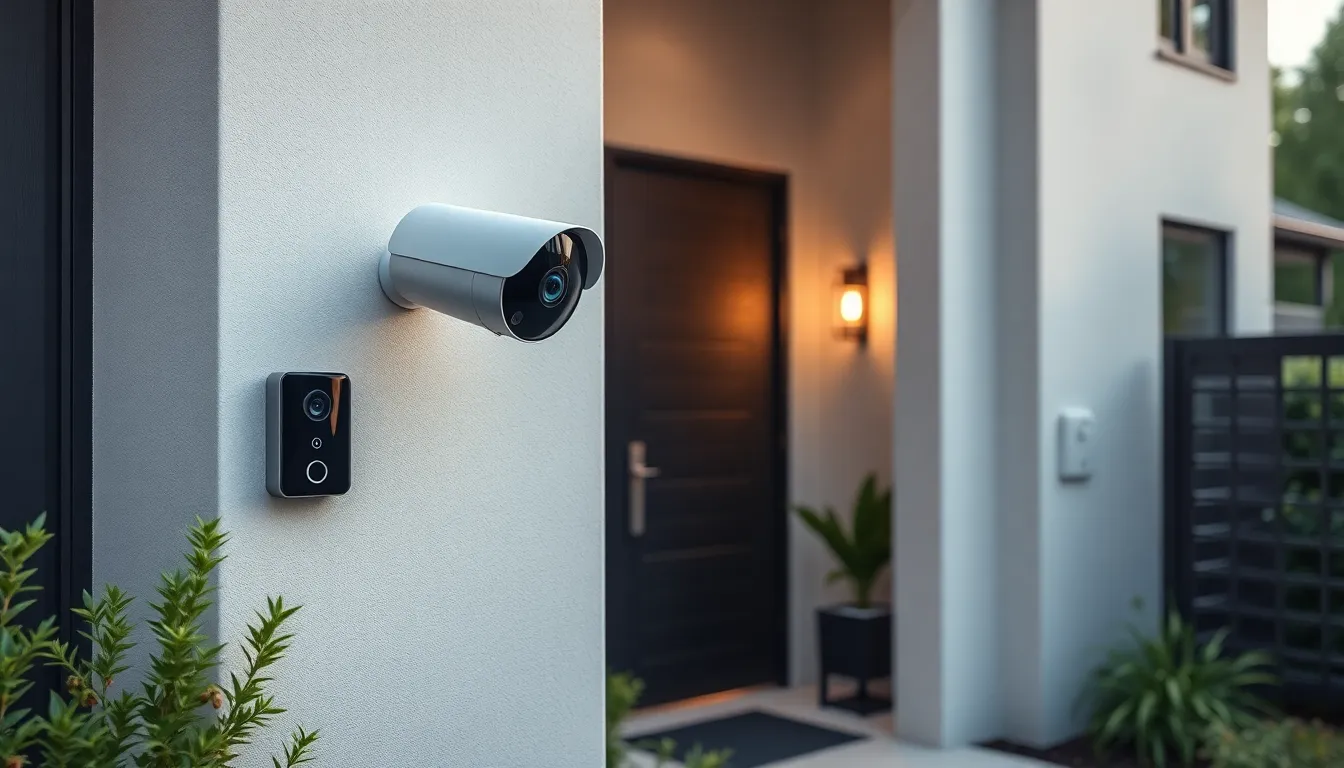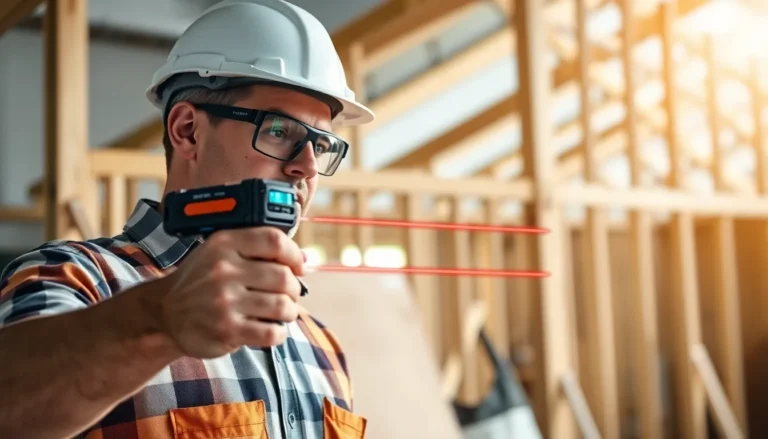Table of Contents
ToggleIn today’s fast-paced world, home monitoring tech has become essential for peace of mind and security. With advancements in smart technology, homeowners can now keep an eye on their property from anywhere, at any time. This shift not only enhances safety but also streamlines everyday life.
From smart cameras to advanced alarm systems, these tools provide real-time alerts and insights, ensuring that homes remain secure. As more people embrace the convenience of connected devices, the market for home monitoring solutions continues to grow, offering a wide range of options to fit various needs and budgets. Understanding these technologies can empower homeowners to make informed decisions and create a safer living environment.
Overview Of Home Monitoring Tech
Home monitoring technology encompasses various devices and systems designed to enhance residential safety and convenience. This tech provides homeowners with the ability to monitor their properties remotely, mitigating risks related to burglary, fire, and other emergencies.
Types of Home Monitoring Tech
- Smart Cameras: Smart cameras enable video surveillance through mobile devices. Features include HD video, night vision, and motion detection notifications. Users can access live feeds and recorded clips, increasing situational awareness.
- Alarm Systems: Alarm systems serve as deterrents against unauthorized entry. Many include window and door sensors, as well as glass break detectors. Advanced models integrate with smartphone apps to send alerts and allow remote monitoring.
- Environmental Sensors: Environmental sensors detect smoke, carbon monoxide, and water leaks. Sending notifications to homeowners, these devices prevent potential disasters and ensure safety through timely alerts.
- Smart Doorbells: Smart doorbells allow two-way communication with visitors via mobile devices. They often feature high-definition video, motion detection, and the ability to set visitor alerts, enhancing entryway security.
- Smart Lock Systems: Smart locks provide keyless entry through mobile apps or codes. Homeowners can manage access remotely, ensuring only authorized individuals can enter their homes.
Key Features and Benefits
- Remote Access: Homeowners can monitor their properties in real-time from anywhere with internet connectivity. This access enhances safety and peace of mind.
- Real-time Alerts: Instant notifications regarding suspicious activities or safety concerns enhance response time and deter potential threats.
- Integration with Smart Home Systems: Many home monitoring devices integrate seamlessly with existing smart home systems. This compatibility allows for centralized control and automation of home security.
Market Trends
The home monitoring tech market continues to grow, with increased consumer demand for security solutions. Industry reports indicate a projected growth rate of approximately 25% annually over the next five years. As technology evolves, new features and functionalities—such as AI-driven analytics and enhanced connectivity—will likely emerge.
Home monitoring technology plays a crucial role in modern safety, offering various solutions tailored to homeowner needs. Understanding available options empowers consumers to make informed decisions, enhancing their home’s security.
Types Of Home Monitoring Tech

Home monitoring technology encompasses various devices that enhance security and convenience. Here’s a closer look at some key types of home monitoring tech.
Security Cameras
Security cameras provide continuous surveillance and can send real-time alerts to homeowners. Smart models feature HD video resolution, night vision, and motion detection capabilities. Many units allow remote access via smartphones, enabling users to monitor their property from anywhere. Some systems include cloud storage options, ensuring footage remains accessible. High-quality brands like Arlo and Ring lead the market, offering diverse camera types, such as indoor, outdoor, and floodlight cameras.
Smart Doorbells
Smart doorbells combine advanced features with traditional functionality. They allow homeowners to see and communicate with visitors through a built-in camera and microphone. These devices notify users of activity at their front door, often featuring motion detection and two-way audio. Some models integrate with smart home ecosystems, enabling seamless control and monitoring. Popular brands such as Ring and Nest offer various styles and functionalities to suit different preferences.
Motion Sensors
Motion sensors serve as a foundational element in home security systems. They activate alerts when detecting movement within a specified range, providing instant notifications. These sensors can trigger cameras or alarms, enhancing overall security. Some smart motion sensors include features like pet immunity, reducing false alarms caused by small animals. Notable brands such as Philips Hue and SmartThings offer reliable motion sensors compatible with various smart home setups.
Benefits Of Home Monitoring Tech
Home monitoring technology offers numerous benefits that enhance residential safety and convenience. Its features contribute to a more secure living environment, allowing homeowners to feel at ease.
Enhanced Security
Enhanced security remains a primary advantage of home monitoring tech. Security cameras, alarm systems, and motion sensors deter potential intruders with visible surveillance and immediate alerts. For instance, smart cameras equipped with HD video, night vision, and two-way audio provide continuous monitoring, ensuring homeowners can respond promptly to any suspicious activity. A study by the University of North Carolina at Charlotte indicates that homes with security systems are 300% less likely to be burglarized.
Remote Monitoring
Remote monitoring allows homeowners to oversee their properties from any location. Through smartphone apps or web interfaces, individuals track live feeds from security cameras and receive real-time alerts about unusual activities. This feature enables quick responses to potential threats or emergencies, such as fire or flooding. The flexibility of monitoring while away extends peace of mind, as homeowners can check their properties anytime, anywhere.
Integration With Smart Home Devices
Integration with smart home devices enhances the functionality of home monitoring tech. Devices like smart doorbells, smart locks, and environmental sensors interact seamlessly with security systems, providing a cohesive experience. Homeowners can automate actions—locking doors or turning on lights—based on motion detection or specific alerts. This compatibility maximizes security while streamlining daily routines. Having a unified smart home setup simplifies management, as individuals control various aspects from one central application.
Considerations When Choosing Home Monitoring Tech
Selecting the right home monitoring technology involves evaluating several essential factors. Homeowners must assess their budget, desired features, and the installation process to ensure an optimal choice.
Budget
Budget plays a crucial role in selecting home monitoring tech. Costs can vary based on device types and functionalities. Basic security cameras start around $50, while advanced systems with HD video and smart integration can exceed $500. Homeowners should outline their budget limits, accounting for both initial purchase and ongoing subscription fees for features like cloud storage. Evaluating different brands and packages ensures that homeowners get the best value for their investment.
Features
Features significantly impact the effectiveness of home monitoring systems. Key features to consider include:
- Resolution: Higher resolution provides clearer images, essential for identifying intruders.
- Night Vision: This feature allows for monitoring in low-light conditions, enhancing security after dark.
- Two-way Audio: Enables communication through smart doorbells and cameras, useful for interacting with visitors.
- Smart Integration: Compatibility with smart home systems allows for seamless control and automation.
- Alerts and Notifications: Real-time alerts enhance responsiveness to potential security threats.
Selecting devices that offer the desired features aligns with homeowners’ security goals.
Installation Process
The installation process can vary among different home monitoring tech options. Some systems provide DIY installation, which typically involves:
- Setting Up the Devices: Unboxing and placing cameras or sensors in optimal locations.
- Connecting to Wi-Fi: Ensuring a stable internet connection for functionality and remote access.
- Configuring the App: Downloading and setting up the associated mobile application for monitoring.
Professional installation is available for more complex systems, often recommended for integrated solutions requiring extensive wiring or specific configurations. Homeowners should weigh their comfort level with DIY installations against the benefits of professional setup.
Home monitoring technology is transforming how individuals protect their homes and loved ones. With a range of devices available homeowners can create a customized security system that fits their unique needs. The ability to monitor properties remotely not only enhances safety but also provides peace of mind in an increasingly uncertain world.
As the market continues to grow and evolve staying informed about the latest advancements will empower homeowners to make smart decisions. By understanding the features and benefits of various systems they can invest in solutions that enhance their security while fitting within their budget. Embracing these technologies is a proactive step toward ensuring a safer living environment for everyone.







